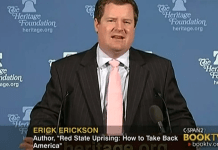Mortgage rates have been a topic of significant concern and attention for prospective homebuyers and industry analysts alike. In recent weeks, these rates have dipped just below the 7% threshold, marking a slight decrease from previous readings. However, even with this dip, rates remain stubbornly high, exerting pressure on the housing market and posing challenges for potential buyers.
According to Freddie Mac’s latest Primary Mortgage Market Survey, released on Thursday, the average rate on the benchmark 30-year fixed mortgage decreased to 6.99% this week, down from 7.03% the previous week. This slight decline may offer some relief to buyers, albeit within the context of an overall high-rate environment.
The impact of these rates on the housing market cannot be overstated. High mortgage rates act as a deterrent for many potential buyers, affecting affordability and influencing purchasing decisions. As rates hover near or above the 7% mark, many buyers may find themselves priced out of the market or unable to secure financing for their desired properties.
The effects of high mortgage rates are particularly evident in the recent trends observed in home sales. Data from various sources, including industry reports and market analyses, indicate a slowdown in home sales activity. In April, for example, home sales declined for the second consecutive month, with high mortgage rates being cited as a primary factor contributing to this downturn.
The challenges posed by high mortgage rates extend beyond the realm of homebuyers. They also have implications for the broader economy and housing industry. A sluggish housing market can impact various sectors, including construction, real estate, and related industries. A slowdown in home sales can lead to reduced demand for new construction projects, affecting builders, contractors, and suppliers.
Furthermore, high mortgage rates may dampen consumer confidence and spending. The prospect of facing higher monthly mortgage payments can make potential buyers more cautious about making large financial commitments, such as purchasing a home. This cautious approach can ripple through the economy, affecting sectors reliant on consumer spending.
In response to these challenges, policymakers and industry stakeholders are closely monitoring mortgage rate trends and considering potential interventions to support the housing market. Efforts to stimulate demand, such as incentives for first-time homebuyers or measures to lower borrowing costs, may be explored to counteract the impact of high rates.
Additionally, there is a growing emphasis on addressing underlying factors contributing to the persistence of high mortgage rates. Supply constraints, including shortages of available housing inventory and labor shortages in the construction industry, are among the issues exacerbating the situation. Addressing these supply-side challenges is essential for alleviating pressure on prices and affordability.
In the meantime, prospective homebuyers are advised to exercise caution and diligence when navigating the current housing market. This includes conducting thorough research, exploring various financing options, and seeking professional guidance from real estate agents and mortgage brokers.
Despite the challenges posed by high mortgage rates, there are opportunities for buyers who are well-prepared and informed. For those who can afford to enter the market at current rates, favorable property selection and potential long-term investment returns may outweigh short-term affordability concerns.























